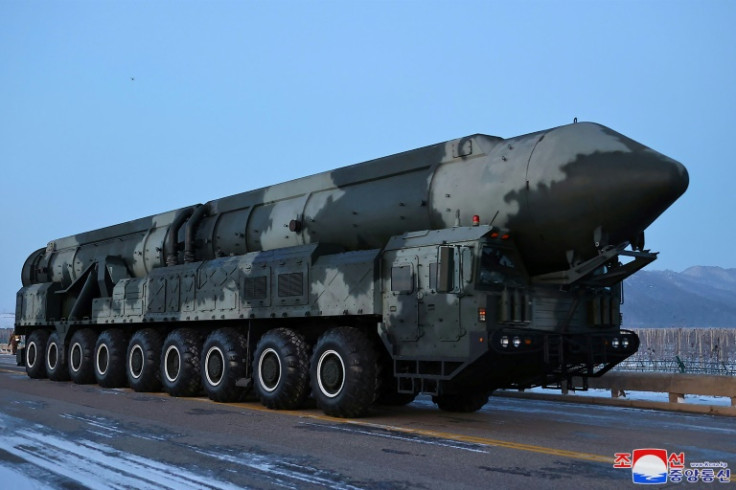
North Korean leader Kim Jong Un has vowed to accelerate his country's nuclear build-up and warned Washington against making a "wrong decision" after overseeing the launch of the country's most powerful ballistic missile, state media said Tuesday.
Monday's test launch of the solid-fuel Hwasong-18 came a day after the nuclear-powered submarine USS Missouri made port in Busan and followed a US-South Korea warning that a nuclear attack by Pyongyang would mean "the end of the Kim regime".
The two allies along with Japan on Tuesday activated a system to share real-time data on North Korean launches, part of their tightening security cooperation in response to Pyongyang's growing nuclear threats.
Kim said the launch of the missile capable of reaching US shores was "a clear signal to hostile forces" and showed the country's options should Washington make "a wrong decision against it", the Korean Central News Agency said.
"A drill of launching (the) ICBM Hwasongpho-18 was staged as an important military action to clearly show the DPRK's nuclear strategic forces' overwhelming counteraction will and matchless strength to the enemies," KCNA said of the Monday launch.
The North Korean leader, who pictures showed in attendance with his young daughter, clad in a pink fur jacket, also "set forth some important new tasks for the development of the DPRK's nuclear strategic forces," KCNA added.
The Hwasong-18, the largest in North Korea's arsenal, flew just over 1,000 kilometres and reached a maximum altitude of around 6,000 kilometres, it said, and demonstrated "the combat capability of ICBM unit".
South Korea's military said Monday that the ICBM fired used solid fuel, which makes missiles easier to transport and faster to fire than liquid-fuelled versions.
The launch marked the third time the North had tested a solid-fuel ICBM, after launches in April and July, which analysts said signalled consistent efforts to improve the technology.
Japan's defence ministry said the Hwasong-18 had a potential range of more than 15,000 kilometres, which would cover all of the United States.
Seoul and Washington have ramped up defence cooperation in the face of a record-breaking series of weapons tests by Pyongyang this year.
The conservative government of South Korean President Yoon Suk Yeol has also made a concerted effort to improve historically strained ties with Japan, the country's former colonial ruler.
The United States and South Korea on Friday held the second meeting of their Nuclear Consultative Group in Washington, where they discussed nuclear deterrence options in the event of conflict with the North.
On Saturday, they warned that any nuclear attack from Pyongyang on the United States or South Korea would result in the end of the Kim regime.
A spokesperson for North Korea's defence ministry on Sunday slammed the allies' plans to expand annual joint military exercises next year to include a nuclear operation drill, calling it "an open declaration on nuclear confrontation".
North Korea has carried out a record-breaking number of banned weapons tests this year, including last month's launch of a military satellite, which it claimed was providing images of US and South Korean military sites.
The data-sharing system launched Tuesday was part of an agreement reached between the US, South Korean and Japanese defence chiefs last month that also included setting up multi-year plans for trilateral military exercises.
Pyongyang last year declared itself an "irreversible" nuclear power and has repeatedly said it will never give up its nukes programme, which the regime views as essential for its survival.
The United Nations Security Council has adopted many resolutions calling on North Korea to halt its nuclear and ballistic missile programmes since it first conducted a nuclear test in 2006.









